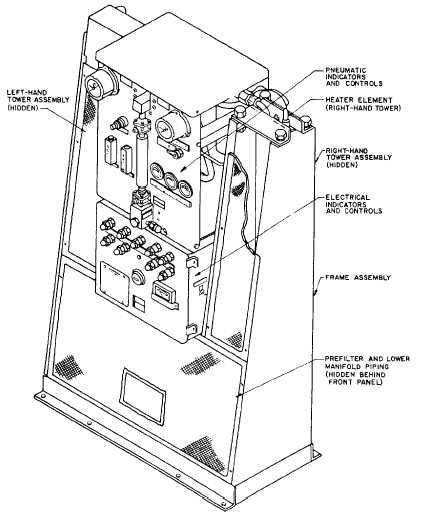In the air-to-air heat exchanger, the dehydrated air is
raised in temperature by the warm air entering the
dehydrator. Heating the air serves to reduce thermal
shock as the air enters the system. The exiting dry air
flows into the receiver for availability to the ship’s air
system.
DESICCANT AIR DEHYDRATOR (TYPE II)
The desiccant is a drying unit. More practically,
desiccant is a substance with a high capacity to remove
(adsorb) water or moisture. It also has a high capacity
to give off that moisture so the desiccant can be reused.
DESICCANT-TYPE DEHYDRATORS (fig. 10-30) are
basically composed of cylindrical flasks filled with
desiccant.
Compressed air system dehydrators use a pair of
desiccant towers. One tower is in service dehydrating
the compressed air, while the other is being reactivated.
A desiccant tower is normally reactivated when dry,
heated air is routed through the tower in the direction
opposite to that of the normal dehydration airflow. The
hot air evaporates the collected moisture and carries it
out of the tower to the atmosphere. The air for the purge
cycle is heated by electrical heaters. When the
reactivating tower completes the reactivation cycle, it is
placed in service to dehydrate air, and the other tower is
reactivated.
REFRIGERATION AND DESICCANT AIR
DEHYDRATOR (TYPE III)
Some installations may use a combination of
refrigeration and desiccant for moisture removal. Hot,
wet air from the compressor first enters a refrigeration
section, where low temperature removes heat from the
airstream and condenses water vapor from the air. Then,
Figure 10-30.—Dehydrator (type II).
10-33


